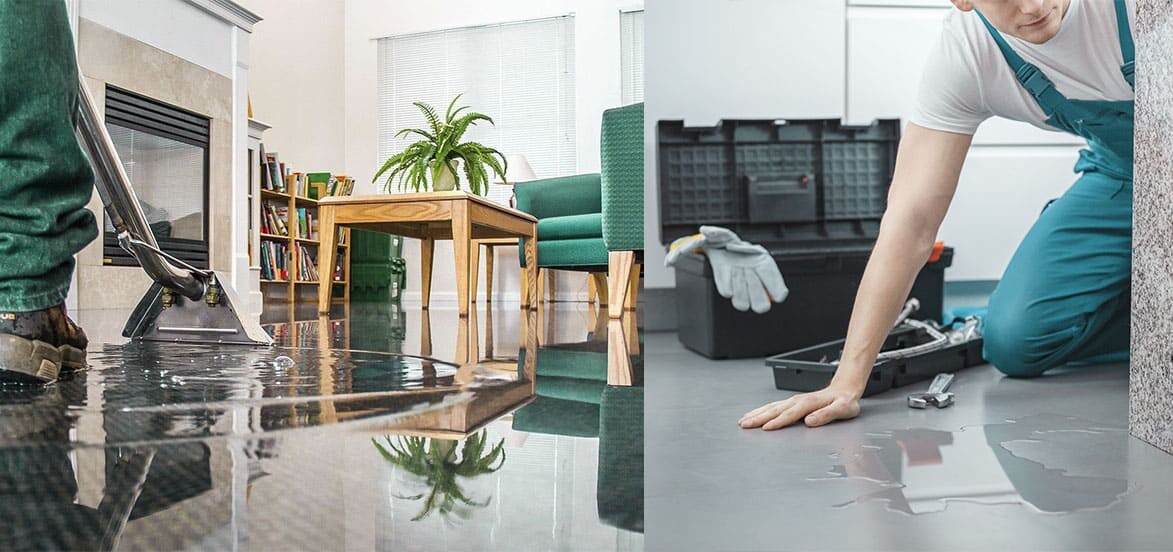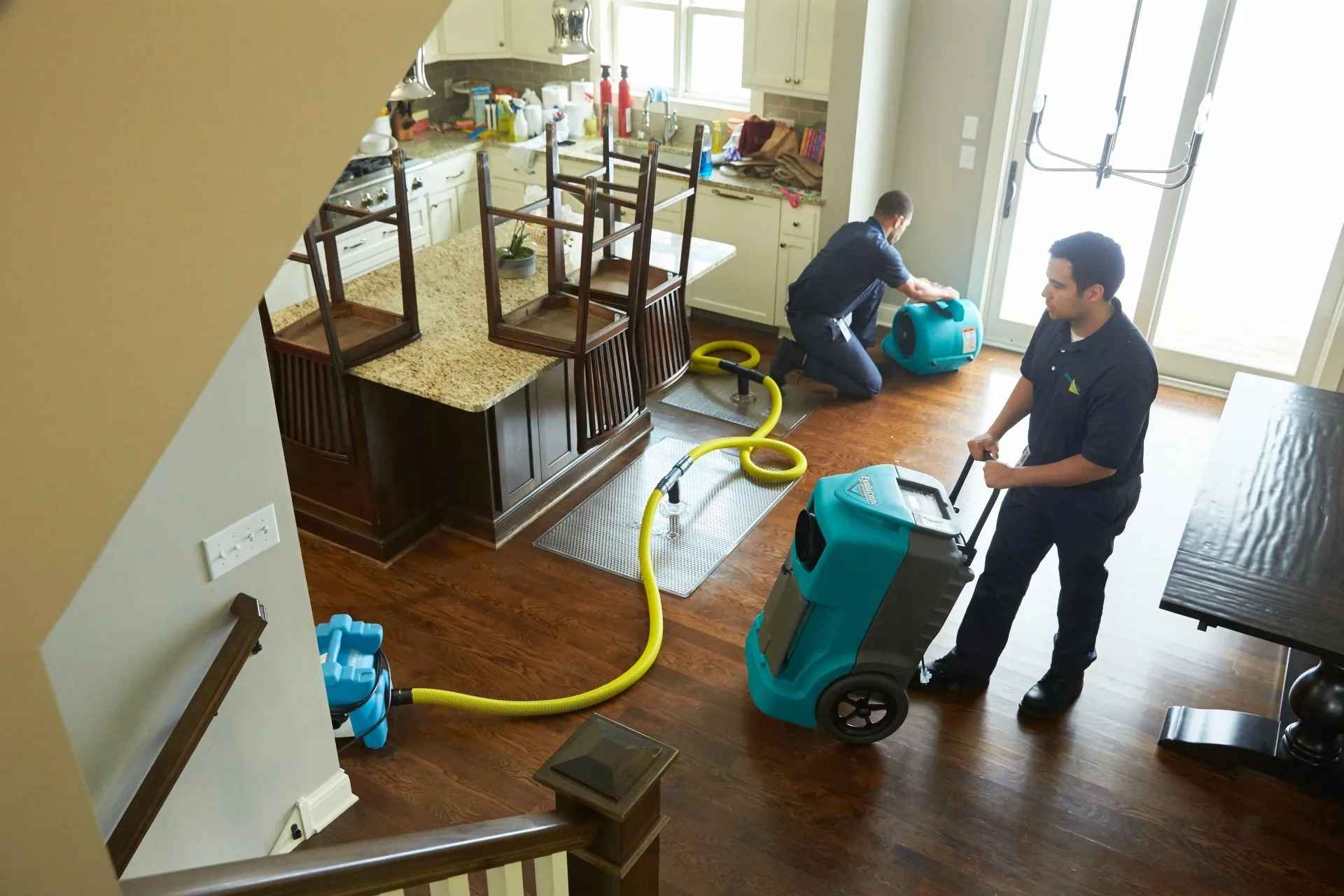Why professional Flood Cleanup Services matter after major flooding
Water Damage Restoration 101: Comprehending the Process and Expense
Water damage can strike suddenly, leaving home owners in a state of complication. Recognizing the restoration process is essential for effective recovery. From evaluating the damage to selecting the appropriate solution supplier, each action affects the overall outcome and cost. Variables such as the type of water damage and necessity additionally play a substantial duty. What are the details strategies utilized in remediation, and exactly how can one prepare for potential expenditures?
Kinds of Water Damage
Water damage can arise from different sources, each offering distinct obstacles for restoration. The three primary kinds of water damage are categorized based upon contamination levels: tidy water, gray water, and black water. Tidy water stems from resources like busted pipelines or rain, positioning marginal health and wellness risks. Gray water, which includes wastewater from sinks or washing machines, contains pollutants that may create pain or illness if consumed. Black water, one of the most unsafe group, originates from sewage or floodwaters, including harmful bacteria and pathogens. Each kind demands details repair strategies and safety actions to properly reduce and deal with the damage wellness risks. Understanding these distinctions is vital for experts and home owners involved in the water damage restoration procedure.
Initial Analysis and Inspection
An extensive preliminary assessment and examination are important steps in the water damage repair procedure. This stage starts with a specialist examining the level of the damage, determining the source of the water invasion, and determining the kind of water involved - Water Damage Restoration. Professionals utilize specific devices to measure wetness degrees in numerous materials, such as wall surfaces, floors, and furniture. Additionally, they analyze architectural honesty and potential carcinogen, consisting of mold development. The searchings for from this inspection inform the remediation plan, leading essential activities and resource allocation. Exact paperwork of the damage is crucial for insurance claims and future reference. Generally, this first assessment prepares for reliable repair, ensuring a thorough response to the certain scenario available

Water Extraction Strategies
Adhering to the first analysis, effective water removal methods are employed to alleviate damage and avoid further issues. These methods involve using specialized devices such as completely submersible pumps and industrial-grade vacuums. The option of method relies on the volume of water existing and the type of materials impacted. For standing water, completely submersible pumps are usually used for quick elimination, while vacuums are suitable for drawing out water from carpetings and furniture. In addition, advanced approaches like water removal mats might be utilized for hard-to-reach locations. The objective is to eliminate as much water as feasible, minimizing the potential for mold and mildew development and architectural damage. Motivate and reliable water removal is crucial in the overall water damage remediation procedure.
Drying and Dehumidification Process
When the water removal is complete, the drying and dehumidification process comes to be important to restoring the damaged area. This stage typically utilizes industrial-grade dehumidifiers and air movers to efficiently reduce wetness degrees. The dehumidifiers reel in wet air, removing excess moisture, while air movers distribute air to increase dissipation. Tracking devices is usually used to track moisture and temperature degrees, guaranteeing suitable drying out problems. The period of this process can vary relying on the level of the water damage and ecological aspects. It is important to extensively completely dry all affected products, including walls, floor covering, and home furnishings, to protect against mold development and architectural damage. Appropriate execution of this action is important for an effective reconstruction end result.
Cleaning and Sanitizing Affected Locations

First Evaluation and Inspection
Prior to beginning any kind of remediation initiatives, a comprehensive first assessment and examination of the affected locations are essential for efficient cleaning and sanitizing. This procedure involves recognizing the level of water damage, establishing the resource of the water intrusion, and evaluating the products affected. Assessors usually search for indicators of mold and mildew development, architectural integrity issues, and damaged items. The evaluation additionally consists of inspecting dampness degrees using specific tools to assure no hidden water pockets remain, as these can cause more problems. Recording the searchings for is essential for planning the next steps in the repair procedure. A thorough preliminary assessment allows restoration specialists to devise a targeted approach for effective cleaning and sterilizing, eventually decreasing damage and wellness threats.
Cleansing Strategies and Products
Reliable cleansing and sterilizing of water-damaged areas need a range of products and methods tailored to the specific products influenced. For permeable surfaces like drywall and carpeting, extraction approaches are essential to get rid of excess dampness, adhered to by deep cleaning with specialized detergents. Non-porous products such as ceramic tile or metal can be cleaned using commercial-grade cleansers that successfully eliminate contaminants. Vapor cleansing is another effective strategy, specifically for carpets and furniture, as it utilizes high temperatures to remove germs and mold. In addition, environmentally friendly items are significantly preferred for their safety and security and efficacy. Ultimately, choosing the proper cleansing approaches and items not just guarantees prompt tidiness but site link likewise aids in protecting against further damage and carcinogen connected with water breach.
Sanitization and Disinfection Techniques
When addressing water damage, appropriate sanitization and sanitation techniques are important to assure the safety and health and wellness of the affected environment. After first cleansing, surface areas need to be treated with proper anti-bacterials to eliminate virus, mold and mildew, and germs that prosper in moist problems. Typical methods consist of making use of EPA-approved chemical anti-bacterials, which can be applied through splashing or wiping strategies. Additionally, ultraviolet (UV) light systems can effectively disinfect areas by neutralizing microbes without severe chemicals. The selection of method often depends upon the type of products influenced and the degree of contamination. Inevitably, complete sanitization not only restores a risk-free home yet additionally aids prevent future health dangers related to remaining dampness and mold and mildew development.

Repairs and Restoration Options

Variables Affecting Restoration Expenses
The extent of water damage straight affects the remediation sets you back house owners can expect to sustain. Factors such as the source of the water, the duration of direct exposure, and the damaged materials considerably affect pricing. As an example, tidy water damage from a busted pipeline is generally less expensive to bring back contrasted to damage triggered by sewage. Furthermore, the level of contamination dictates the requirement for specialized cleansing and disposal services, better boosting expenses. Geographic area likewise plays a duty, as regional labor prices and availability of reconstruction services can differ. Finally, the seriousness of the response impacts prices; quicker interventions usually result in reduce overall expenses by preventing further damage. Comprehending these elements is vital for home owners when estimating remediation prices
The 3 primary kinds of water damage are classified based on contamination levels: tidy water, grey water, and black water. A complete preliminary evaluation and examination are vital steps in the water damage remediation process. For standing water, completely submersible pumps are commonly made use of for rapid removal, while vacuums are perfect for drawing out water from rugs and furniture. The degree of water damage straight influences the reconstruction sets you back homeowners can expect to incur. Tidy water damage from a busted pipeline is generally much less pricey to recover contrasted to damage created by sewer.